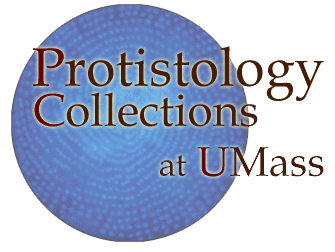
“The province of protozoa, reminiscent of the fertile crescent in the Middle East, straddles the highways of thought that run between the major continents of biology. Down these roads come caravans of concepts and analogies: ideas about hierarchies and taxonomies from one direction, convictions about the basic structures and functions of life from another, opinions about reproduction and development from a third, and theories of the origin and evolution of life’s forms from still another quarter. It is uncanny how these separate trains of thought intersect one another in the land of the single-celled organisms. There they interact, exchange views, and rearrange their loads before they disperse again to inform other regions of biology of their contents and conclusions. A complete history of protozoology must recognize the centrality of this terrain.”
Frederick B. Churchill. 1989. “Toward the History of Protozoology,” Journal of the History of Biology 22: 185-187.
Protistology (formerly called protozoology) is the scientific study of unicellular eukaryotes and their relatives — single cells as living organisms. Protists make up 57 of the 60 distinct “ultrastructural identities” of eukaryotes, with the macroscopic forms most familiar to us (plants, animals and fungi) nestled amongst the other three (Simpson and Patterson, 2007). An extraordinarily diverse assemblage of organisms, protists have distinctive genetic systems, numerous primary, secondary, and tertiary levels of symbiosis, and unique cytoskeletons, and they play important roles in food webs and as pathogens. Among them are some of the most serious human parasites, including the malaria parasites Plasmodium spp., Leishmania, Trypanosoma, Entamoeba and Trichomonas. Many protists, such as Chlamydomonas, Tetrahymena, and Dictyostelium, have become important experimental organisms in scientific and medical research.
What do the Protistology Collections include?
The Protistology collections at UMass focus on the unique aspects of protist biology, those not found in plants, animals and fungi, but which inform our understanding of the evolution of these macroscopic lineages. In addition to having the professional papers, lab notebooks and journals of some of the leading 20th century protistologists, the collection includes the world’s primary repository of light and electron micrographs of protists. Due to the ubiquity and diversity of protists, the collections cross a broad range of disciplines and methodologies, from evolutionary biology to ecology, physiology, medicine, and public health.
The growing number of collections include the papers of:
- Greg Antipa (ciliate development)
- William Balamuth (ciliate biology)
- Lea Bleyman (ciliate genetics)
- Phyllis C. Bradbury Papers (parasitical ciliates)
- Henry James Clark (flagellates)
- David G. Chase Collection (flagellates, TEM)
- Bronislaw Honigberg (parasitic trichomonads)
- Seymour Hutner (protist nutrition)
- John Kloetzel micrograph collections (ciliate cytoskeleton)
- Paul Kugrens (cryptophytes)
- David L. Nanney (Tetrahymena genetics and evolution)
- Hope T. Ritter (flagellate endosymbionts)
- Craig Sandgren (chrysophytes, aquatic ecology)
- Eugene B. Small (ciliophoran systematics and evolution)
- Arthur I. Stern (photosynthesis in Euglena)
- F.J.R. “Max” Taylor (phytoplankton)
- Peter G. Verity (phytoplankton, pelagic ecology)
- Howard C. Whisler (marine fungi)
- Christopher L. F. Woodcock (Acetabularia)
For further information, please contact the Archivists.
Simpson and Patterson, 2007. In Katz, L.A. and D. Bhattacharya, eds. Genomics and Evolution of Microbial Eukaryotes. Oxford

